- How to Estimate Your Kitchen Renovation Costs
- Kitchen Remodel Average Costs
- Estimating the Cost: Navigating the Variables
- Who Do You Need to Hire for Your Kitchen Remodel?
- Kitchen Materials and Costs
- Understanding Your Energy-Score
- What Do Most People Upgrade In Their Kitchen Remodels?
- Is Kitchen Remodeling Worth It?
How to Estimate Your Kitchen Renovation Costs
The cost of remodeling a kitchen can vary widely depending on the scope of the project, the quality of materials, the appliances chosen, and the labor costs in the homeowner's region. Budgeting for such a project requires a thorough understanding of the costs involved, and an assessment of what is affordable without compromising on quality and sustainability.
At EcoHome, we want to help you consider the various aspects of kitchen remodeling costs, providing a detailed breakdown to help homeowners plan their projects with a clear financial perspective. Our interactive kitchen remodel calculator (see above) allows you to estimate the costs based on different variables such as the size of the kitchen, the type of remodel (minor, mid-range, or major), and the choice of materials and appliances.
Kitchen Remodel Average Costs
When embarking on a kitchen remodel journey, understanding the costs is crucial for effective budgeting and decision-making. Kitchen remodel costs can span a wide range, primarily dictated by the scale of the project and the materials chosen. Let’s go through the typical cost ranges while also focusing on the long-term benefits of integrating sustainable materials into your remodel.
| Standard | High-End | Luxury | |
|---|---|---|---|
| Minor Kitchen Remodel | $10,000 | $15,000 | $20,000 |
| Mid-level Remodel | $25,000 | $35,000 | $45,000 |
| Major Kitchen Remodel | $50,000 | $70,000 | $100,000 |
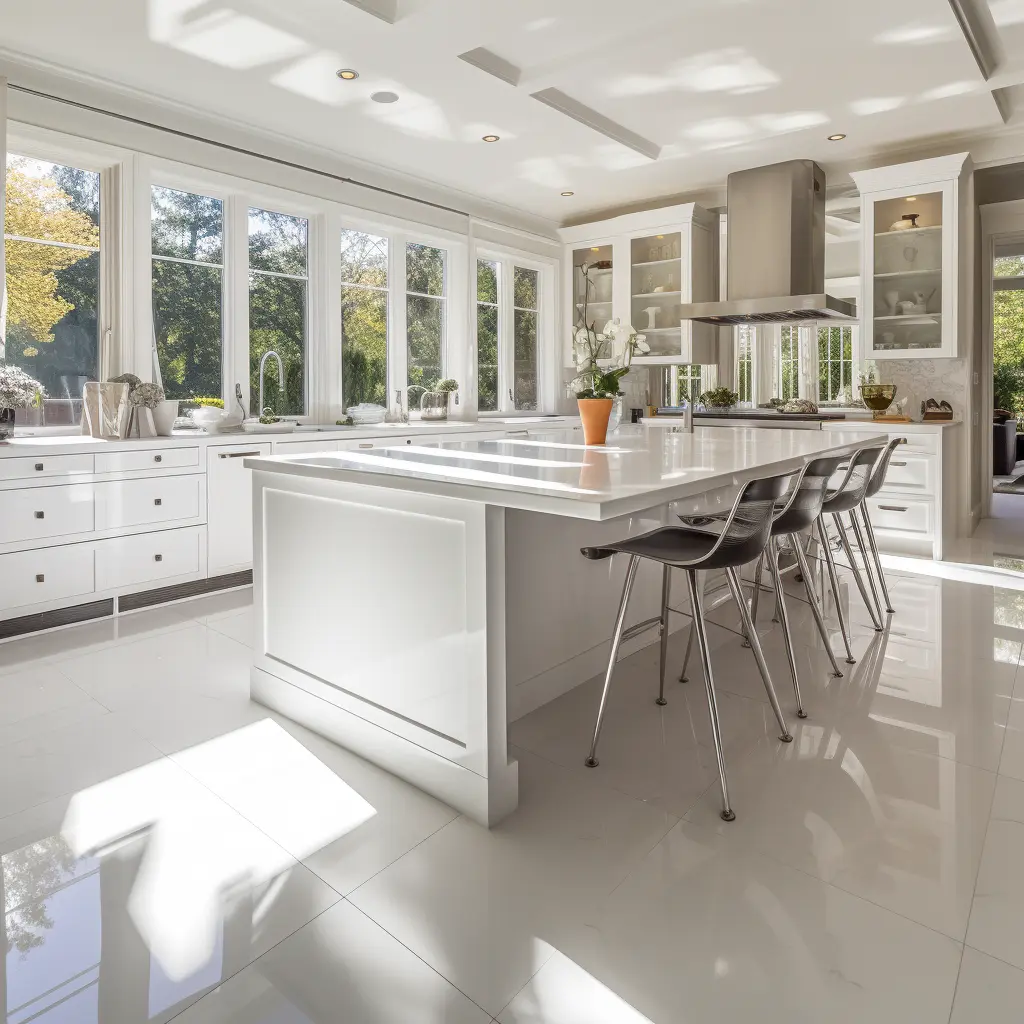
Minor Kitchen Remodel: $10,000 - $20,000
A minor kitchen remodel usually encompasses essential updates like painting, refinishing surfaces, upgrading appliances, or replacing outdated fixtures. Even at this basic level, opting for sustainable materials and energy-efficient appliances can be a smart choice. For instance, choosing low-VOC paints, energy-star rated appliances, and locally sourced materials can minimize environmental impact and, in some cases, save money in the form of reduced energy bills.
Mid-level Remodel: $20,000 – $50,000
A mid-level remodel may involve more extensive work such as replacing cabinets, countertops, and flooring. This range provides a broader scope for integrating sustainability by opting for materials like bamboo or recycled glass countertops, which are not only eco-friendly but also durable and low-maintenance. Furthermore, investing in high-efficiency fixtures and appliances can contribute to long-term cost savings on energy and water bills.
Major Kitchen Remodel: $50,000 – $100,000+
Major kitchen remodels are comprehensive overhauls that can include structural changes, custom cabinetry, high-end appliances, and premium materials. This level of remodeling offers ample opportunity to incorporate sustainable practices and materials. For instance, reclaimed wood for cabinetry, energy-efficient lighting systems, and water-saving fixtures are wise investments that align with sustainability while also adding value to your home.
Understanding Your Return On Investment
The initial investment in sustainable materials and appliances in any kitchen remodel can be offset by the long-term savings and the enduring functionality they offer. Moreover, sustainable kitchen remodels resonate with a growing segment of eco-conscious consumers, increasing the resale value of your home. According to the US Department of Energy you can add up to 6% on to the resale price of your home and sell it up to 89 days faster. Other sources claim even better numbers, which isn't surprising given that the DoE's data is dated by a few years.
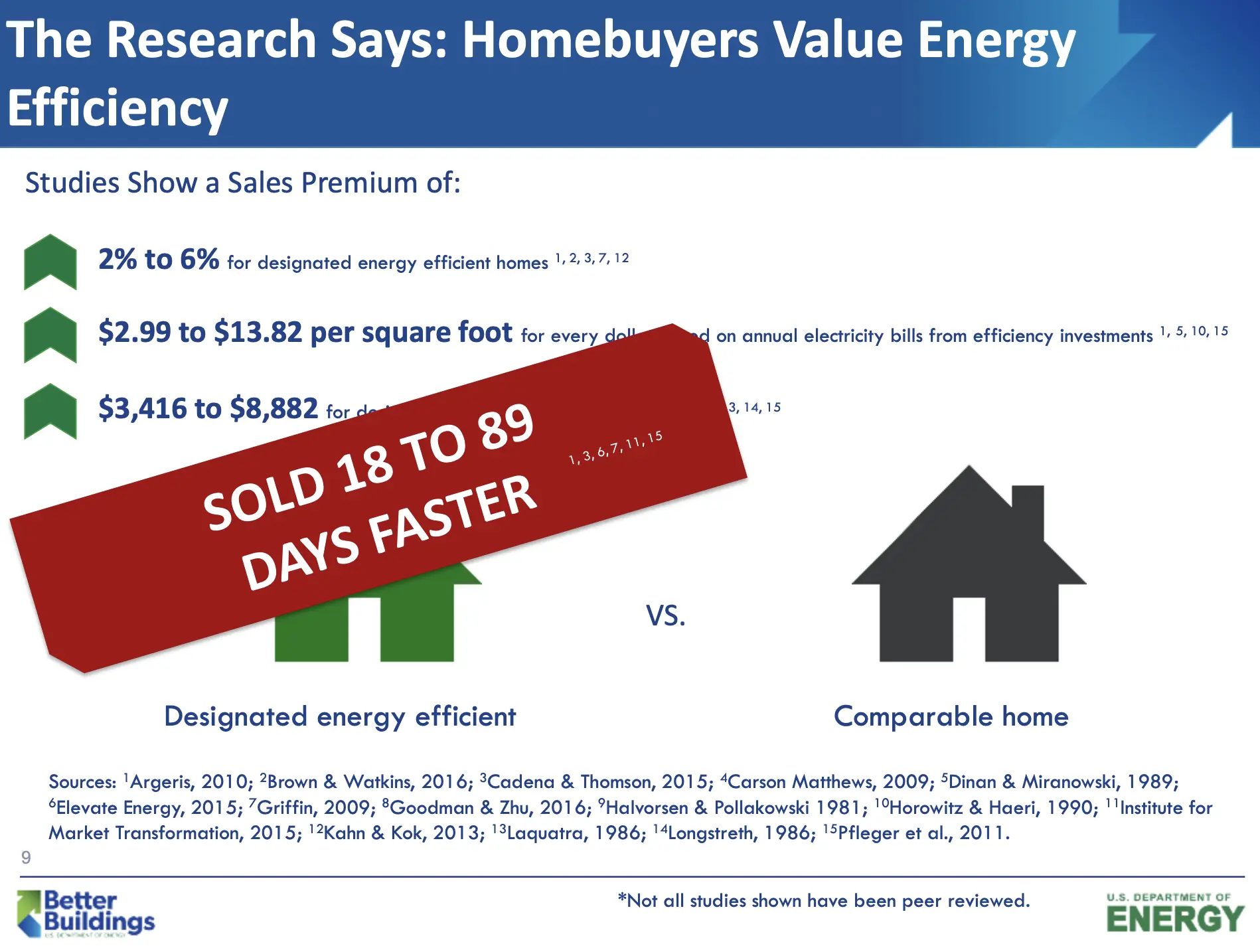
Estimating the Cost: Navigating the Variables
When planning a kitchen remodel, estimating the cost is a critical step that shapes the decisions you will make throughout the project. Various factors come into play, each with its own impact on the overall budget. In this section, we delve into these factors, emphasizing how sustainable choices can influence the cost.
Location:
The region or city where you reside significantly affects the cost of remodeling. Labor costs, permit fees, and the cost of materials can vary widely from one location to another. For instance, urban areas tend to have higher labor rates compared to rural areas. Additionally, some regions have local artisans who can provide custom, sustainably sourced materials at competitive prices, which could either raise or lower your costs depending on local market conditions.
Size of the Kitchen:
The size of your kitchen is a direct factor in the cost of remodeling. Larger kitchens require more materials, more labor, and potentially more complex design considerations. However, a larger space also offers more room for implementing sustainable practices, such as installing energy-efficient appliances that can lower long-term operating costs.
Choice of Materials:
The materials you choose for your remodel play a significant role in the overall cost. Options range from premium materials like natural stone countertops to more budget-friendly alternatives like laminate. Sustainable materials, such as recycled glass, bamboo, or reclaimed wood, often come with a higher upfront cost but provide long-term benefits both environmentally and financially.
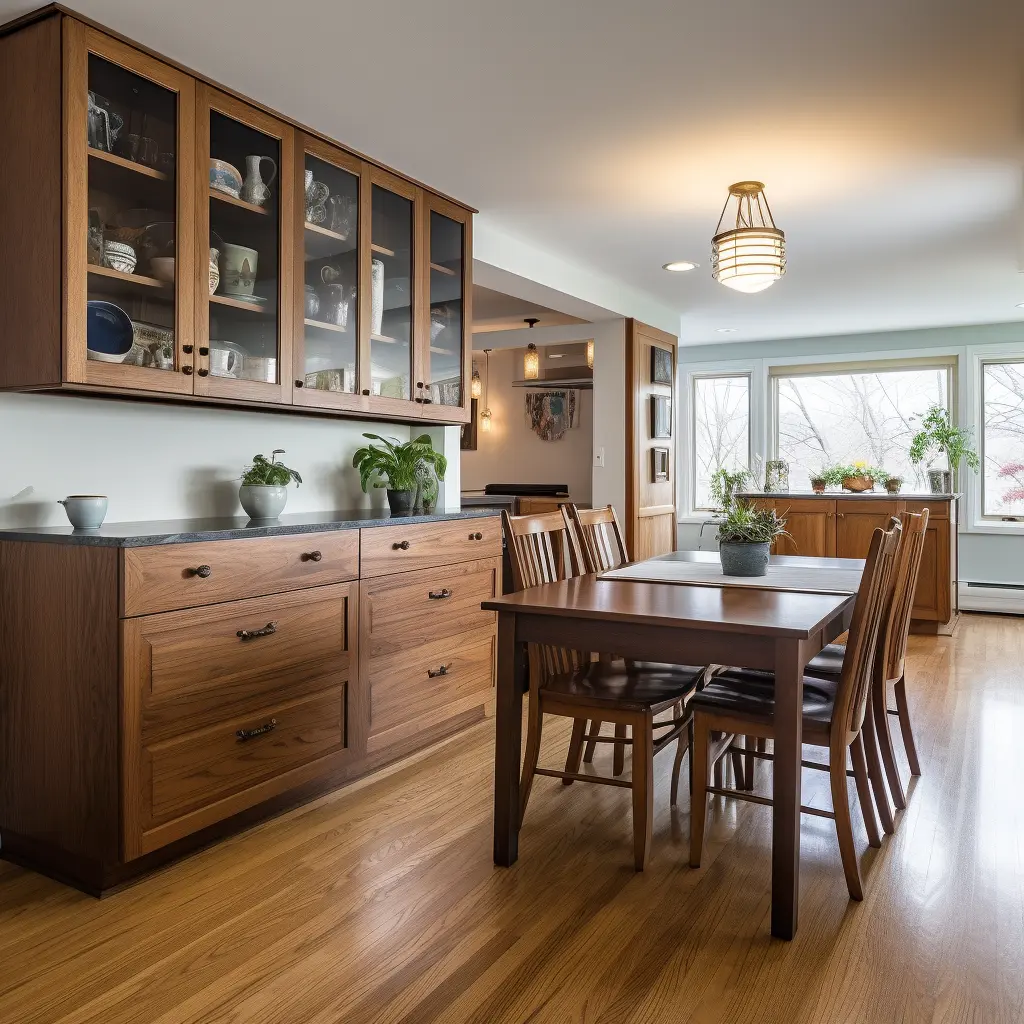
Local Sourcing:
Opting for locally sourced materials can be a cost-effective and eco-friendly choice. Local sourcing reduces transportation emissions and supports local businesses. Additionally, locally sourced materials may be more in tune with the regional climate and conditions, contributing to the resilience and longevity of your kitchen.
Recycled or Upcycled Materials:
Recycled or upcycled materials are often cheaper alternatives to brand new products and contribute to reducing waste. They can add a unique aesthetic to your kitchen while keeping costs down and promoting sustainability.
Customization:
Custom designs and fixtures tend to drive up the cost due to the additional labor and expertise required. However, custom solutions can also allow for the integration of sustainable and energy-efficient features that can save money over time. Estimating the cost of a kitchen remodel requires a holistic view of all these factors. By understanding and analyzing each aspect, especially the impact of sustainable and resilient choices, homeowners can make informed decisions that align with their budget and environmental values.
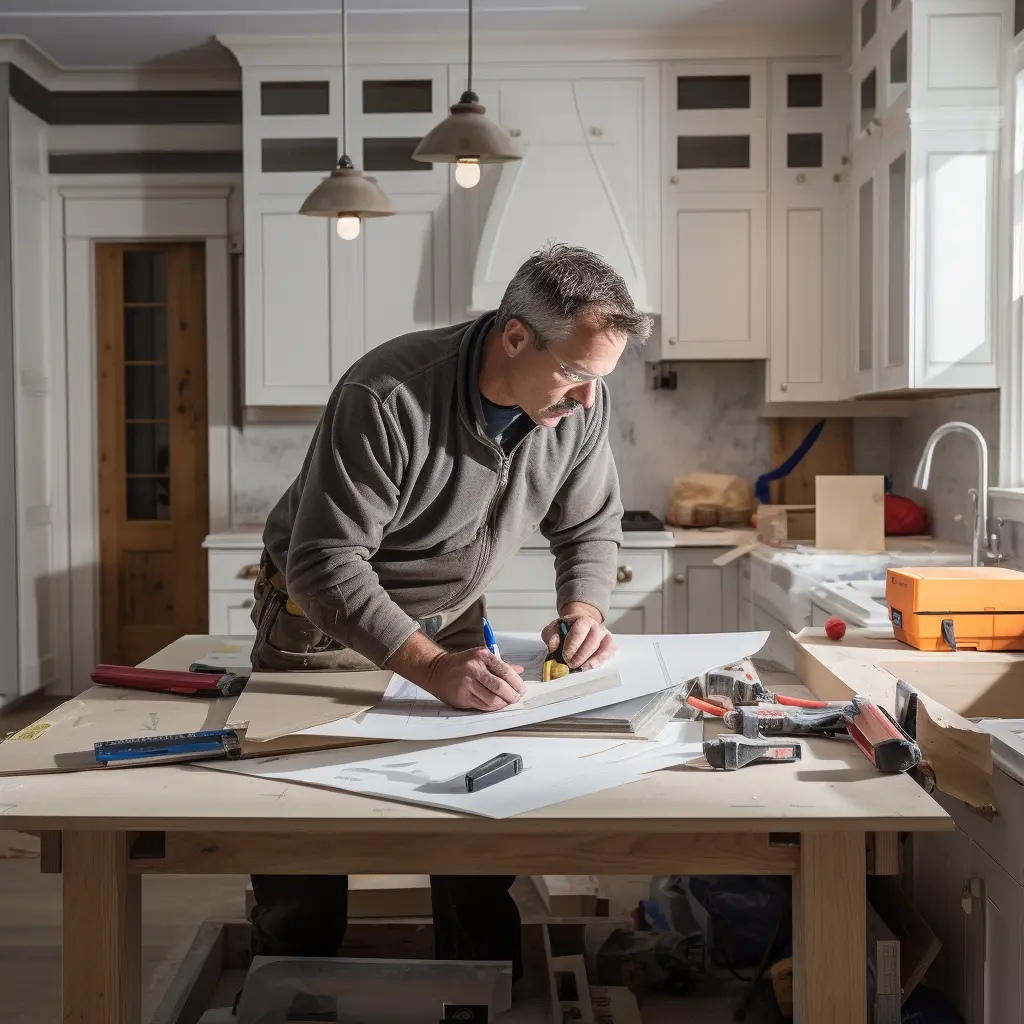
Who Do You Need to Hire for Your Kitchen Remodel?
Embarking on a kitchen remodel is an exciting venture that promises to rejuvenate one of the most vital spaces in your home. However, the road to a flawless remodel is paved with expertise from various professionals who ensure that every aspect of the project is executed to perfection. Based on recent data from a Houzz study in the United States, here's a breakdown of the professionals commonly hired to assist with kitchen renovations and the value they bring to your project:
| Professional | Percentage |
|---|---|
| General contractor | 53% |
| Cabinetmaker | 31% |
| Kitchen designer | 23% |
| Interior designer/decorator | 13% |
| Architect | 10% |
| Kitchen remodeler | 12% |
source: 2022 U.S. Houzz Kitchen Trends Study, page 13
General Contractor:
A general contractor is your project's maestro, orchestrating the work of subcontractors, obtaining necessary permits, and ensuring that the renovation adheres to the stipulated budget and timeline. Their comprehensive oversight is invaluable in keeping the project on track and alleviating the stress that comes with managing multiple trades.
Cabinetmaker:
Cabinets are often the cornerstone of a kitchen's functionality and aesthetics. A skilled cabinetmaker can craft custom cabinetry that maximizes storage, enhances usability, and elevates the overall design of your kitchen.
Kitchen Designer:
A kitchen designer melds functionality with aesthetics to create a layout that optimizes workflow and complements your home's style. Their expertise in kitchen ergonomics and design trends can be instrumental in creating a space that's both beautiful and highly functional.
Interior Designer/Decorator:
An interior designer or decorator can help in selecting colors, materials, and finishes that resonate with your personal style and cohesively blend with the rest of your home. Their eye for design and knowledge of the latest trends can bring a polished, professional touch to your remodel.
Architect:
If your remodel involves altering the structure or layout of your kitchen, hiring an architect is a prudent move. They can draft plans that ensure the structural integrity of your home while realizing your vision for a revamped kitchen space.
Kitchen Remodeler:
Kitchen remodelers specialize in kitchen renovations and often have a team of skilled tradespeople to handle the various aspects of the remodel. They are a one-stop-shop for homeowners looking for a streamlined approach to their renovation project.
Each professional plays a different role in bringing your kitchen remodel to fruition. The right team of experts can translate your vision into reality, ensuring that every detail is meticulously attended to, and the end result is a kitchen you’ll cherish for years to come.
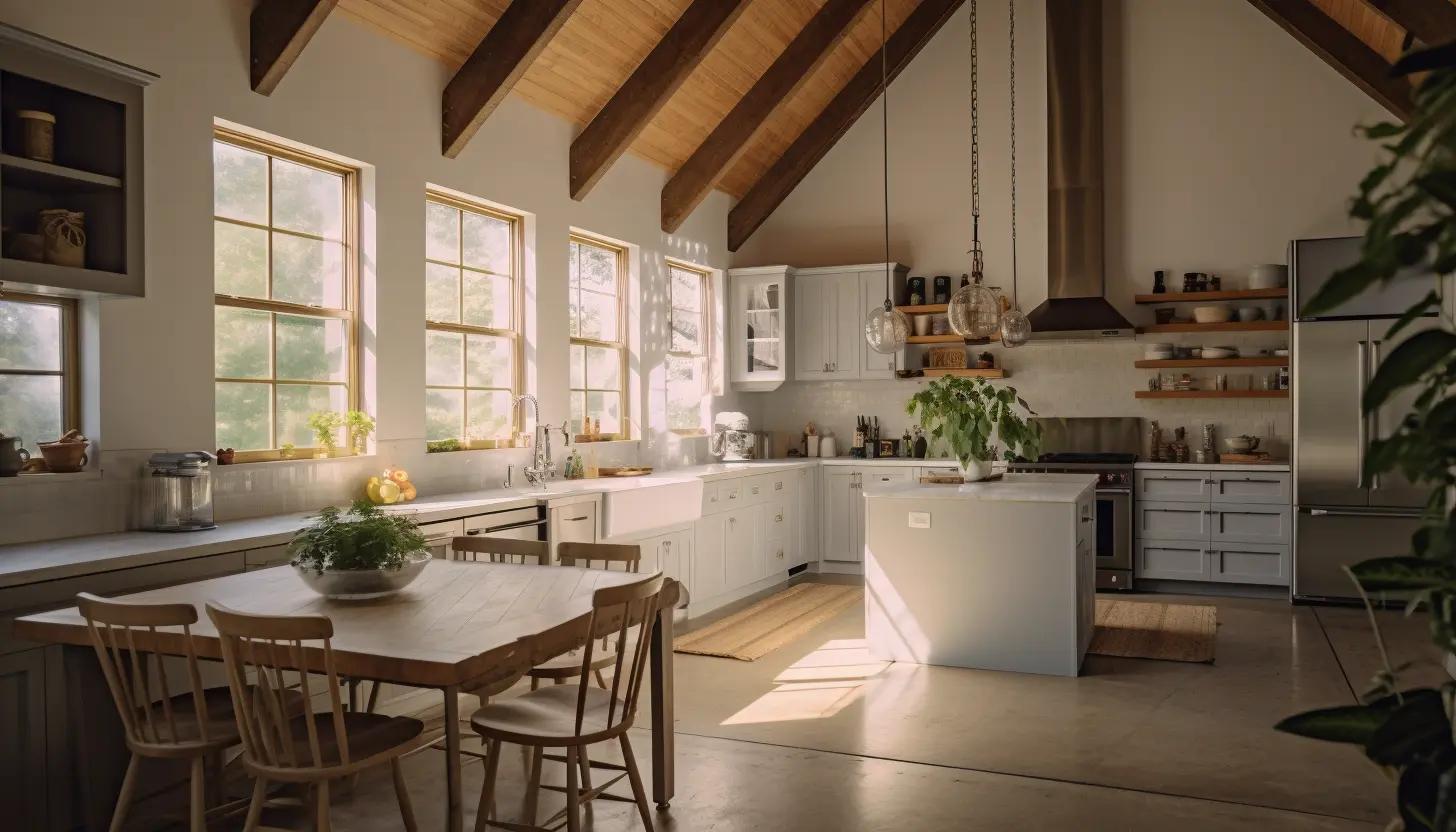
Kitchen Materials and Costs
When planning a kitchen remodel, understanding the specific costs involved in different aspects of the project is crucial for budgeting accurately and making informed decisions. This section breaks down the costs associated with various components of a kitchen remodel, emphasizing the sustainable choices available.
Understanding Your Eco-Score
How sustainable (or not) your kitchen remodel is largely depends on your materials and sourcing. Wood can be really sustainable if it's locally sourced and harvested, or it could be terrible if it's coming from a Brazilian rainforest. Marble, granite, and the other choices have similar considerations to keep in mind. We've made these tables below to try to help you make sense of it.
Appliances:
Cost Range: The cost of new appliances can range from $200 to $3,000 or more per appliance, depending on the brand and features.
Sustainable Option: Opt for energy-efficient appliances with ENERGY STAR ratings. Although they may have a higher upfront cost, they offer long-term savings by reducing energy consumption.
| Appliance Type | Eco-Friendliness | Energy Efficiency | Durability | Notes |
|---|---|---|---|---|
| Conventional Oven | Low | Moderate | High | Energy Star models offer better efficiency |
| Induction Cooktop | Moderate | High | High | Requires compatible cookware |
| Gas Stove | Low | Moderate | High | Efficient for cooking, less so for heating |
| Electric Stove | Low | Moderate | Moderate | Coil models are generally less efficient |
| Refrigerator | Moderate-High | High | Moderate | Energy Star models are highly efficient |
| Dishwasher | Moderate | High | Moderate | Energy-efficient models use less water |
| Microwave Oven | Low | Moderate | Moderate | Convection microwaves are more efficient |
| Freezer | Moderate | Moderate-High | High | Upright models tend to be less efficient |
| Garbage Disposal | Low | Low | Moderate | Not very eco-friendly, consumes water |
Cabinets:
Cost Range: The cost of installing new cabinets can range from $3,000 to $10,000 or more, depending on the material and design.
Sustainable Option: Consider using sustainable materials like bamboo or locally harvested or reclaimed wood, which are eco-friendly and can offer a unique aesthetic.
| Cabinet Type | Eco-Friendliness | Durability | Customization | Notes |
|---|---|---|---|---|
| Stock | Low | Moderate | Low | Mass-produced, limited eco-friendly options |
| Semi-Custom | Moderate | High | Moderate | Some sustainable materials; customizable sizes |
| Custom | High | Very High | Very High | Made-to-order, many eco-friendly options |
Countertops:
Cost Range: Countertops can cost anywhere from $1,000 to $5,000 or more.
Sustainable Option: Opt for countertops made from recycled materials or natural stone that's sourced locally to reduce transportation emissions.
| Countertop Material | Eco-Friendliness | Durability | Maintenance | Cost | Aesthetic Appeal |
|---|---|---|---|---|---|
| Laminate | Low (mostly petroleum-based) | Moderate | Low | Low | Moderate |
| Wood | High (renewable, biodegradable) | Moderate-High | Moderate | Moderate | High |
| Quartz | Moderate (engineered, some natural materials) | High | Low | High | High |
| Granite | Low-Moderate (mined, but long-lasting) | High | Moderate | High | High |
| Marble | Low-Moderate (natural but mined) | Moderate | High | High | Very High |
Backsplash
Cost Range: Backsplashes are pretty standard changes in a kitchen. Depending on how much you need, account for a few hundred extra bucks on top of your countertop prices.
Sustainable Option: Like countertops, opt for backsplashes made from recycled materials or natural stone that's sourced locally to reduce transportation emissions.
| Backsplash Material | Eco-Friendliness | Durability | Maintenance | Cost | Aesthetic Appeal |
|---|---|---|---|---|---|
| Ceramic Tile | Moderate (often recycled materials) | High | Low | Low-Moderate | High |
| Glass Tile | High (often recycled, long-lasting) | High | Low | Moderate | High |
| Stone | Low-Moderate (natural but mined) | High | Moderate | High | High |
| Metal | Moderate (recyclable, but energy-intensive to produce) | High | Low | Moderate-High | Moderate |
| Wood | High (renewable, biodegradable) | Moderate | Moderate-High | Moderate | High |
| Marble | Low-Moderate (natural but mined) | Moderate | High | High | Very High |
Flooring:
Cost Range: Flooring costs can range from $1,000 to $5,000 or more, depending on the material and square footage.
Sustainable Option: Bamboo or cork flooring are sustainable choices that are durable and provide a modern look.
| Flooring Type | Eco-Friendliness | Durability | Aesthetic Appeal | Notes |
|---|---|---|---|---|
| Laminate | Moderate | Moderate | Moderate | Easy to install, not as durable as other options |
| Vinyl | Low | High | Moderate | Water-resistant, but less eco-friendly |
| Tile | Moderate-High | High | High | Durable and can be eco-friendly depending on the material |
| Concrete | Variable | Very High | Variable | Extremely durable, eco-friendliness depends on sourcing and production methods |
| Hardwood | High | High | Very High | Eco-friendly if sourced responsibly, needs regular maintenance |
Electrical Outlets:
Cost Range: Electrical outlets may seem straightforward, but there are actually a few eco-friendly and advanced options available. The cost depends on a lot of factors, but budget a little more than $100 per outlet for safety.
Sustainable Option: Electrical outlets may seem straightforward, but there are actually a few eco-friendly and advanced options available. Smart and energy-monitoring outlets often offer the best eco-friendliness as they can be programmed to reduce phantom power draw or even turn off completely when not in use.
| Outlet Type | Eco-Friendliness | Safety Features | Smart Home Integration | Notes |
|---|---|---|---|---|
| Standard Outlet | Low | Low | No | Basic, no special features |
| GFCI Outlet | Low | High | No | For wet areas like kitchen and bathroom |
| Tamper-Resistant | Low | High | No | Shutter mechanism for child safety |
| USB Outlet | Moderate | Moderate | No | Built-in USB ports |
| Smart Outlet | High | High | Yes | App-controlled, energy monitoring |
| Pop-Out Outlet | Low | Moderate | No | Pops out when needed, hides when not |
| Energy Monitoring Outlet | High | Moderate | Optional | Monitors energy usage |
Lighting:
Cost Range: Upgrading lighting can cost between $200 and $2,000 or more.
Sustainable Option: Install LED lighting and consider adding skylights to utilize natural light, reducing energy usage.
| Lighting Type | Eco-Friendliness | Dimmable | Smart Home Integration | Notes |
|---|---|---|---|---|
| Incandescent Bulbs | Low | Yes | No | Energy-inefficient, warm light |
| Halogen Bulbs | Low | Yes | No | Bright, white light |
| CFL Bulbs | Moderate | Some | No | Energy-efficient, contain mercury |
| LED Bulbs | High | Yes | Optional | Energy-efficient, long-lasting |
| Smart Bulbs | High | Yes | Yes | App-controlled, energy monitoring |
| Recessed Lighting | Varies | Varies | Optional | Type depends on bulb used |
| Under-Cabinet Lights | Varies | Varies | Optional | Type depends on bulb used |
| Pendant Lights | Varies | Varies | Optional | Type depends on bulb used |
| Track Lighting | Varies | Varies | Optional | Type depends on bulb used |
Plumbing Fixtures:
Cost Range: New plumbing fixtures can range from $100 to $1,000 or more.
Sustainable Option: Water-saving fixtures like low-flow faucets and dual-flush toilets can reduce water usage and save money over time.
| Fixture Type | Eco-Friendliness | Durability | Water Efficiency | Notes |
|---|---|---|---|---|
| Standard Faucet | Low | High | Low | Common but not very eco-friendly |
| Low-Flow Faucet | High | High | High | Reduces water usage |
| Touchless Faucet | Moderate | High | Moderate | Sensor-based, can save water |
| Ceramic Disk Faucet | Moderate | Very High | Moderate | Long-lasting, less prone to leaks |
| Stainless Steel Sink | Moderate | Very High | N/A | Durable but production isn't eco-friendly |
| Cast Iron Sink | Low | Very High | N/A | Very durable but heavy and not eco-friendly |
| Composite Sink | High | High | N/A | Made from recycled materials |
| Standard Garbage Disposal | Low | Moderate | N/A | Convenient but not eco-friendly |
| Septic-Assist Garbage Disposal | High | Moderate | N/A | Designed for septic systems, more eco-friendly |
Painting and Finishing:
Cost Range: Painting and finishing costs can range from $500 to $2,000 or more.
Sustainable Option: Use low-VOC or VOC-free paints to improve indoor air quality.
| Paint Type | Eco-Friendliness | Durability | Ease of Cleaning | Notes |
|---|---|---|---|---|
| Latex (Water-Based) | High | Moderate | Easy | Low VOC, quick drying |
| Oil-Based | Low | High | Moderate | High VOC, long-lasting |
| Chalk Paint | Moderate | Low | Difficult | Eco-friendly versions available, but less durable |
| Milk Paint | High | Low | Moderate | Organic, but less durable |
| Acrylic | Moderate | High | Easy | Low VOC options available |
| Zero VOC | Very High | Moderate | Easy | Almost no VOCs, eco-friendly |
Windows and Ventilation:
Cost Range: Costs can range from $300 to $1,000 or more per window.
Sustainable Option: Energy-efficient windows and proper ventilation systems can enhance energy savings and indoor air quality.
| Feature Type | Options | Eco-Friendliness | Insulation | Durability | Notes |
|---|---|---|---|---|---|
| Windows | Double-Pane | High | High | High | Energy-efficient, good insulation |
| Triple-Pane | Higher | Higher | High | Superior energy efficiency | |
| Single-Pane | Low | Low | Moderate | Not recommended for energy efficiency | |
| Doors | Solid Core | Moderate | High | High | Good insulation, durable |
| Hollow Core | Low | Low | Moderate | Poor insulation | |
| Glass | Varies | Varies | Varies | Depends on type of glass used | |
| Ventilation | Downdraft | Varies | Low | Moderate | Effective for island hobs |
| Island-Mounted | Varies | Moderate | High | Effective, often more decorative | |
| Under-Cabinet | Varies | Moderate | High | Common, effective | |
| Wall-Mounted | Varies | Moderate | High | Common in many kitchens |
Range Hood
| Range Hood Type | Effectiveness | Ease of Installation | Aesthetic Appeal | Notes |
|---|---|---|---|---|
| Downdraft | Moderate | Moderate-High | High | Ideal for islands but less effective at smoke removal |
| Island-Mounted | High | Low-Moderate | High | Effective but may require professional installation |
| Under-Cabinet | High | High | Moderate | Efficient and easy to install; common in many kitchens |
| Wall-Mounted | High | Moderate | High | Visually striking but will require professional installation |
Installation and Labor:
Cost Range: Installation and labor costs can vary widely based on the region, complexity of the project, and the professionals hired.
Consideration: Hire contractors who are experienced in sustainable remodeling practices to ensure a high-quality, eco-friendly outcome.
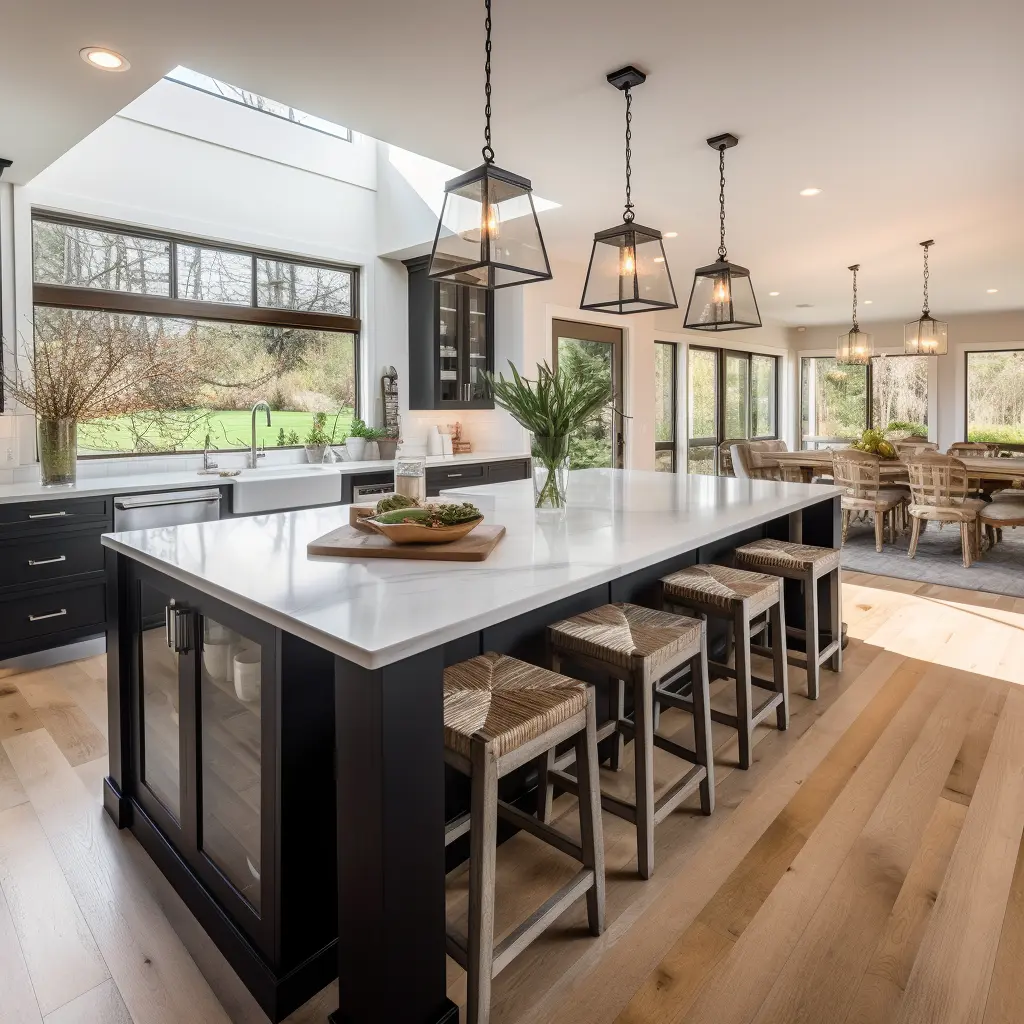
Understanding Your Energy-Score
The typical Energy Score for a kitchen remodel measures 8/10.
Why Your Score Matters
The kitchen is one of the most energy-consuming areas in a home, with appliances like the refrigerator, oven, and dishwasher running frequently. A remodel provides an excellent opportunity to upgrade to energy-efficient appliances and materials, thus lowering your energy consumption and bills.
How to Improve Your Score
Energy-Efficient Appliances: Consider replacing old appliances with Energy Star-rated options.
LED Lighting: Replace incandescent or CFL bulbs with LED lights, which are more energy-efficient and have a longer lifespan.
Water-Saving Faucets: Install low-flow faucets to reduce water usage, which is particularly beneficial if you have a water heater that consumes electricity.
Insulation: Proper insulation can help maintain temperature, reducing the need for heating or cooling.
By incorporating these features into your kitchen remodel, you can significantly improve your Energy Score, save on utility bills, and contribute to a more sustainable future.
What Do Most People Upgrade In Their Kitchen Remodels?
| Major Kitchen Features | Percentage |
|---|---|
| Countertops | 91% |
| Backsplash | 86% |
| Sinks | 84% |
| Faucets | 81% |
| Light Fixtures | 76% |
| Flooring | 64% |
| Appliances (all) | 50% |
| Wall Finish | 48% |
| Appliances (some) | 33% |
| Windows | 28% |
| Interior Doors | 19% |
| Exterior Doors | 18% |
| Electronics | 9% |
| source: 2022 U.S. Houzz Kitchen Trends Study, page 6 |
Upgrading Countertops:
A countertop makeover stands as the most popular upgrade, with its profound impact on the aesthetics and functionality of the kitchen. Choosing durable and visually appealing materials like quartz or granite can significantly enhance the kitchen's appeal.
Upgrading your Backsplash:
Upgrading the backsplash not only provides an opportunity to inject a fresh style into your kitchen but also enhances the ease of cleaning and maintenance behind the cooking area.
Upgrading Sinks
A new sink can redefine the utility and style of your kitchen. From farmhouse sinks to undermount styles, the choices are ample and can align with the new aesthetics of your remodel.
Upgrading Faucets
Modern faucets with features like touchless operation or pull-down sprayers add convenience and a contemporary touch to the kitchen.
Upgrading Light Fixtures
Updating light fixtures can brighten up the space and add a stylish flair. Consider incorporating layered lighting with a mix of ambient, task, and accent lights for a well-lit and inviting kitchen.
Upgrading Flooring:
New flooring can dramatically transform the look and feel of the kitchen. Sustainable options like bamboo or cork are both eco-friendly and eye-catching.
Upgrading Appliances:
Modern appliances not only come with improved functionalities but also offer better energy efficiency which can lower utility bills over time.
Upgrading Wall Finishes:
A fresh coat of paint or new wall finishes can enliven the kitchen space, making it feel clean and updated.
Upgrading Windows:
New windows can usher in more natural light, enhance ventilation, and contribute to energy efficiency.
Upgrading Interior Doors and Exterior Doors:
Updating doors can improve the flow and coherence of the kitchen with the rest of the home.
Upgrading Electronics:
Integrating smart electronics like intelligent lighting systems or smart appliances can transform your kitchen into a tech-savvy space that aligns with modern-day living.
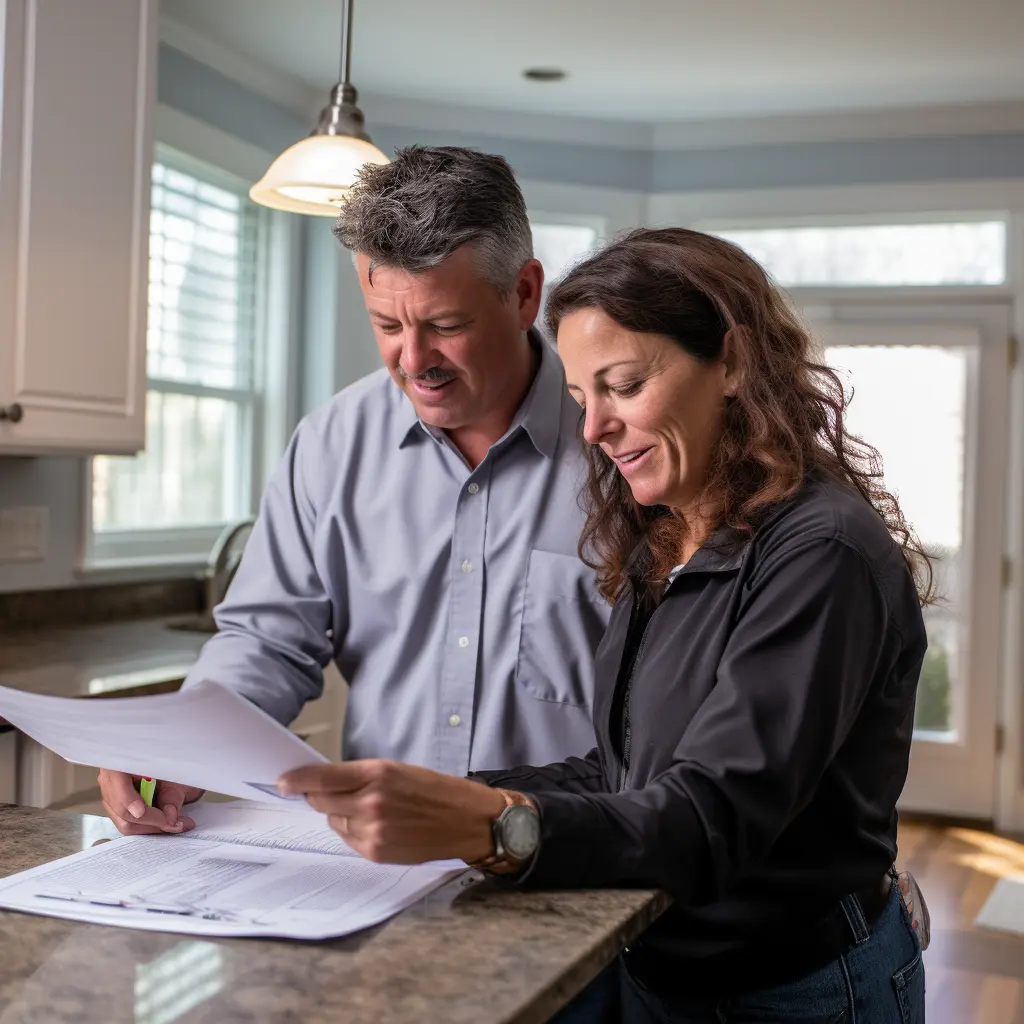
Is Kitchen Remodeling Worth It?
Embarking on a kitchen remodeling project is not just about creating a visually appealing and functional space; it's also an investment that can add significant value to your home. The ROI (Return on Investment) of a kitchen remodel can vary based on numerous factors including the quality of materials, the extent of the remodel, and the trends in the local real estate market.
Financial ROI:
Traditional Remodel: A conventional kitchen remodel can offer a substantial ROI. According to various studies, homeowners can expect to recoup anywhere from 60% to 80% or more of the costs upon resale.
Sustainable Remodel: Investing in a sustainable kitchen remodel can enhance the ROI further. Energy-efficient appliances, water-saving fixtures, and durable, eco-friendly materials can attract environmentally-conscious buyers, potentially increasing the home's resale value.
Energy Savings:
Long-Term Savings: Sustainable remodeling practices often lead to reduced energy and water consumption, translating into long-term savings on utility bills. Over time, these savings can add up significantly, offsetting some of the initial investment in a green remodel.
Resilience and Durability:
Material Longevity: Eco-friendly materials often tend to be more durable and resilient, requiring less maintenance and replacement over time. For instance, bamboo flooring is known for its durability and can withstand the daily wear and tear better than some traditional flooring materials.
Climate Resilience: Sustainable designs can also incorporate elements that enhance a home's resilience to local climate conditions, reducing maintenance costs and increasing the home's long-term value.
Improved Livability and Health:
Indoor Air Quality: Utilizing low-VOC or VOC-free paints and finishes, along with adequate ventilation systems, can significantly improve indoor air quality, contributing to a healthier living environment.
Comfort: Energy-efficient windows and insulation can enhance comfort by maintaining a consistent indoor temperature, making the space more enjoyable and comfortable to live in.
Environmental Impact:
Reduced Carbon Footprint: By opting for energy-efficient appliances, locally sourced materials, and other sustainable practices, homeowners can significantly reduce the carbon footprint of their remodel, contributing to broader environmental goals.
